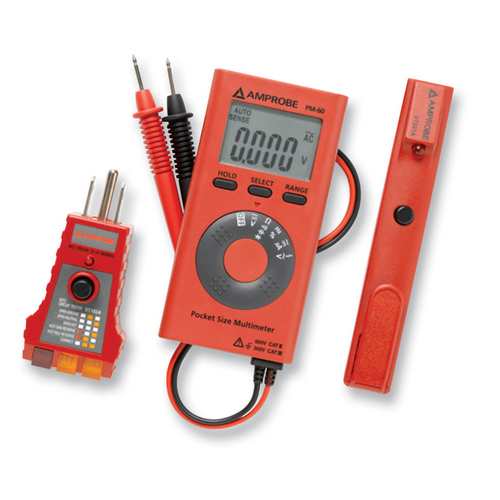Awhile back, the folks at Amprobe offered to set me up with a selection of their residential electrical testing tools. Immediately, I came down with a case of the yips as electricity scares the bejesus out of me. BUT, after taking a few calming breaths, I came to the conclusion that if the Amprobe tools could take some of the mystery out of electricity, then they might help ease my electrophobia. Plus, I know pros. I live with an engineer and fan of electrical DIY who has professional-electrician connections. I was in. Send on the tools! When they arrived, I decided NOT to write a typical review, because, really, what would that mean to most of us? No, I wanted to use the tools in a practical way, in ways actual homeowners would use them.
In all, Amprobe sent 4 products: the PK-100R Residential Testing Kit, which consists of a multimeter (PM-60), a non-contact voltage detector (VT201A) and a receptacle tester (ST102A), as well as a Digital Clamp Meter (ACD0-4), all of which fit into the clamp meter’s handy protective case.
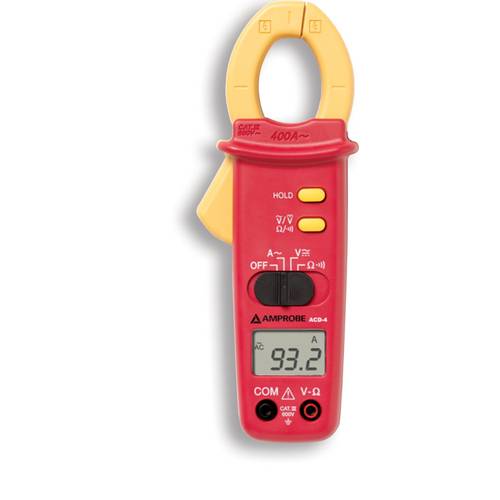
After unpacking everything, I handed them off to my live-in electrical know-it-all, who took them to the office to have the professional electricians give them the once over. They’re conclusion: extremely high quality testing tools. Okay, they’re men of few words, but they are important words.
After that it was time to put them to practical use and to figure out just what the heck I’d use them for. Now, I could tell you what each can do based on the product info, but that sort of stuff makes my eyes glaze over, so I’m guessing it produces the same effect in you. Instead, I decided to find things to fix and then figure out how to use the Amprobe products to actually repair them, thereby learning through practical application.
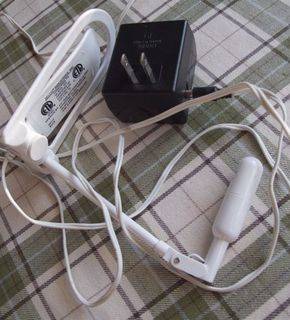
First on the docket was my book light. It had stopped working AGES ago, but I couldn’t bring myself to toss it. We began by checking its light bulb (and spare) with the multimeter. We had continuity, so we knew both of those were working.
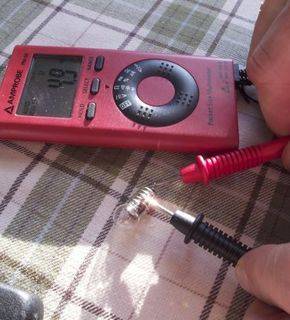
Then we checked the light socket with the multimeter. Nothing registered on the meter, which meant no juice was getting to the bulb. SOMEWHERE along the wire we had a problem.
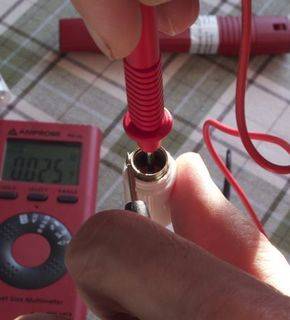
It was time to pull out the magic wand of electrical testing: the Non-Contact Voltage Detector. (Here’s a little video of the VP600SB to reiterate their awesomeness.) We ran the little wand along the wire from the outlet to appliance to follow the juice, as it were.
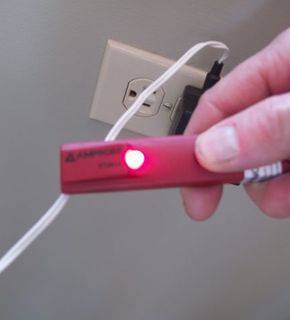
The detector magically lights up and gives off an audible signal when it detects live voltage, which it did when we started testing the wire. However, when we approached the connection to the appliance, our indicator stopped indicating voltage. Hmmm….interesting.
We grabbed the mulitmeter again, and started probing the wire. This, again, made me a little tweaky, as we actually stuck the points of the multimeter through the wire jacket, but my partner assured me it was ‘safe’. As we probed, we discovered there was a good two inch gap in the wire. It was as if the wire had pulled right out of the socket inside the insulation. (How that happened, I have no idea.)
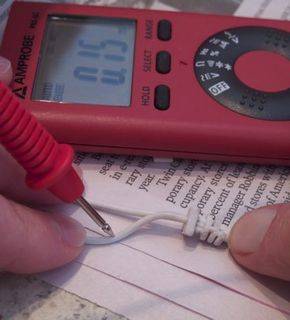
From there, my cohort stripped the wire jacket, soldered the wires and reconnected the whole thing. After that, we used the mulitmeter to make sure we soldered it up correctly and verified we had continuity.
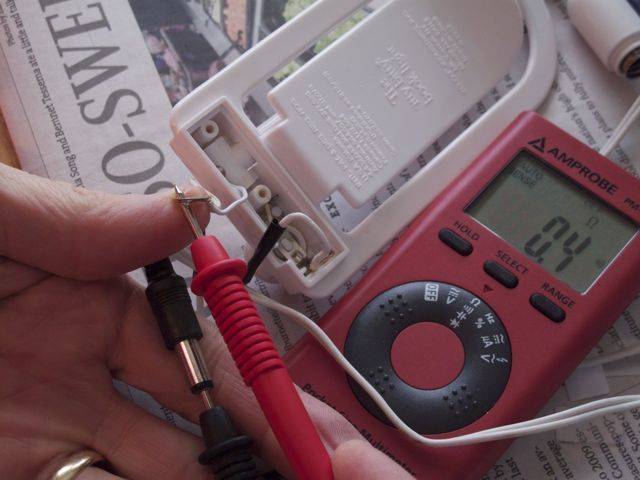
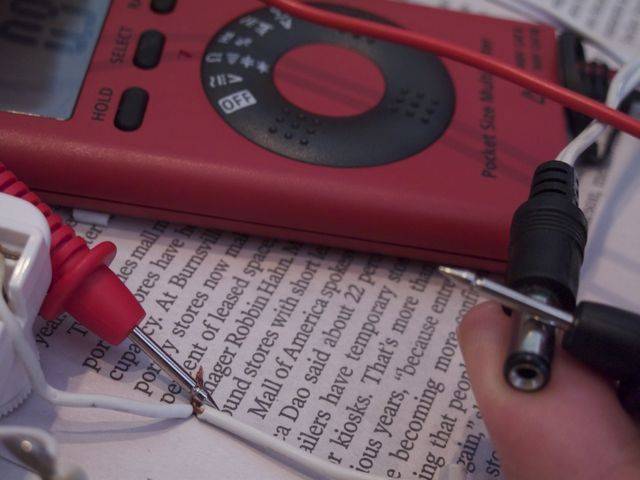
And, voila…light, let there BE! Cool, huh?
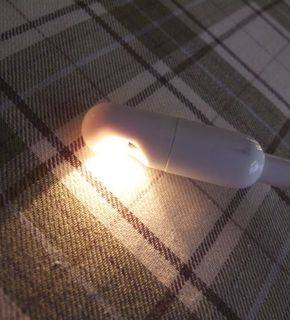
On a fix-it high, I sought out an old outlet in our basement that hasn’t worked since we moved into our house, and, for some reason, we never addressed it. For this job, I popped in the receptacle tester, which acts as an outlet mindreader. (No joke!) It has lights on the front of it that actually TELL you if an outlet is wired up properly, and if it isn’t, it TELLS YOU WHAT’S WRONG. Amazing!
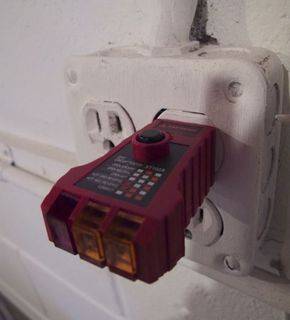
SO, I plugged the receptacle tester in the non-working outlet. No lights illuminated. That, according to the tester itself, meant that the outlet was ‘Open Hot’.
Before we attempted to fix the outlet, we, of course, turned off the electricity at the breaker box. We used the tester and a nightlight to check for current as they were on separate lines.
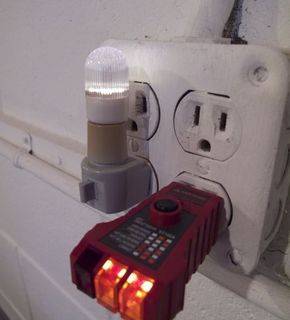
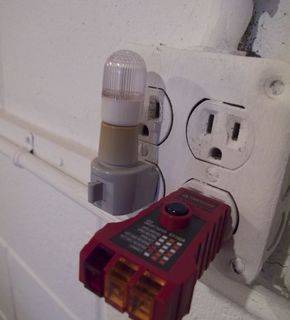
After the juice was off, we removed the outlet and saw the reason for the open hot diagnosis: a missing jumper tab between the two gold hot screws.
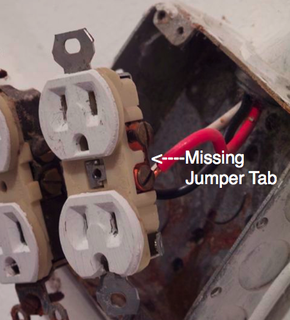
Then it was just a matter of installing a new outlet. As you can see from the illuminated lights, we installed it correctly.
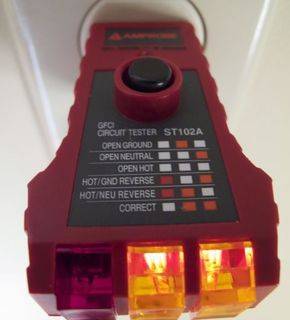
Next on the testing agenda was the Digital Clamp Meter. For this one, we didn’t have a current fix-it, but DID have a problem in the past with a blown circuit when using our microwave. The meter will help illustrate.
We headed to the breaker and put the meter around the power wire to the microwave. Here’s a picture of the microwave NOT running:
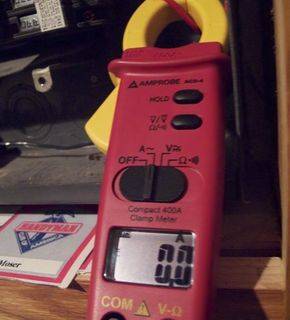
Then we turned on microwave and saw that it was drawing 12.9 amps. Now, in the past, that particular breaker used to be 15 amps; throw in a few other small appliances along with that 12.9 and poof…blown circuit. The fix for this was upping the amperage. We called a pro for this project who pulled new wire from the box to the microwave and put it on a separate 20 amp circuit. Pulling 12.9 amps now causes no problems whatsoever.
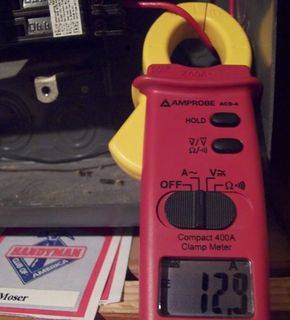
For fun, we then clamped the meter around the main power coming to house in fuse panel to see how much amperage the house was drawing. At that time, it was 4.7. The lower the number the better, of course, and to GET it lower, you could turn on various appliances to see who the hogs are, provided they are on that line (you have two).
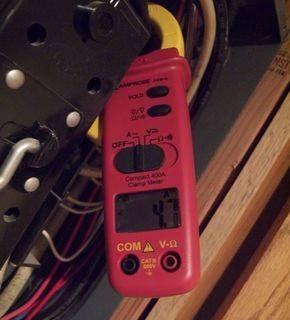
Ultimately, we only scratched the surface of the potential of these excellent products and are certain we will find new ways to use them. The average homeowner will never outgrow these tools, and even if you don’t want to start wiring outlets and running wire, they’ll help you know what’s going on behind your walls and switch plate covers, thereby enabling you to have a coherent conversation with an electrician. They most defiantly help take some of the mystery out of electricity.
For more information about these and other Amprobe electrical products, go to the Amprobe homepage. To purchase them, visit Lowes.
